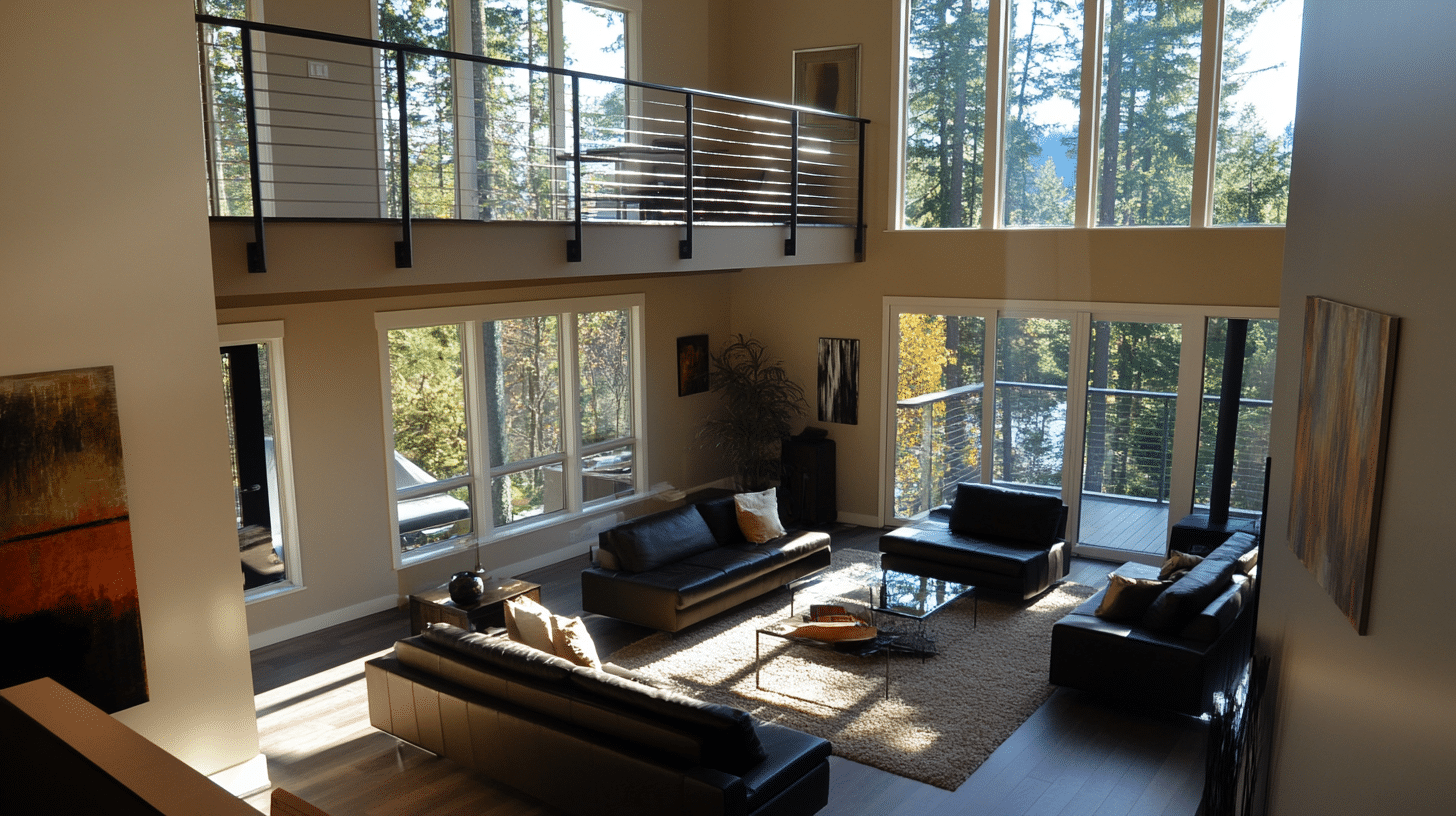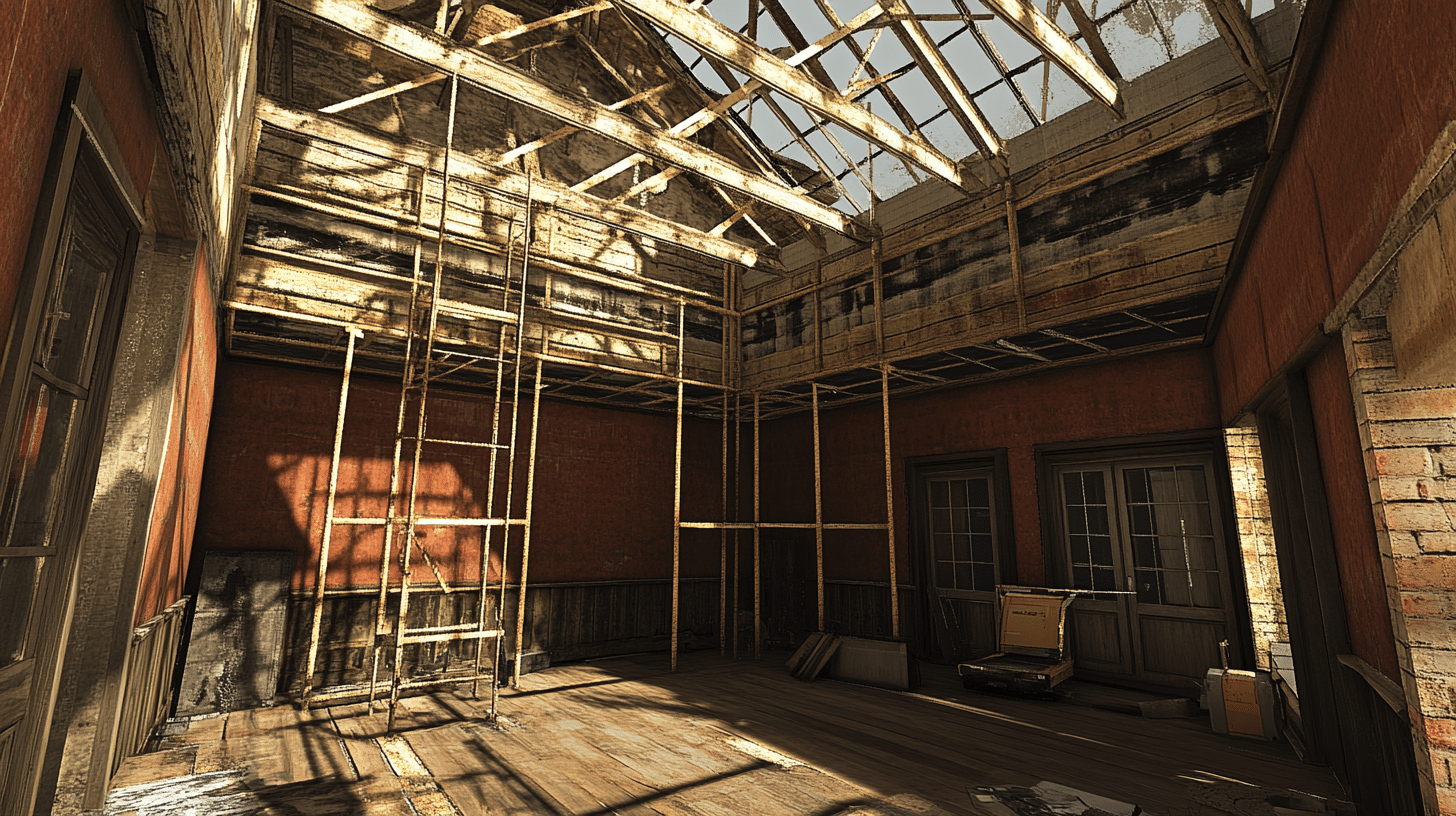Do your rooms feel cramped or closed in? One often overlooked solution is to look up – raising your ceiling can dramatically remake your space, making it feel larger, airier, and more inviting.
While changing your ceiling height might seem like a major undertaking, there are actually several approaches to consider, ranging from complete structural changes to clever visual techniques that create the illusion of height.
The right method for your home will depend on your budget, the current structure of your space, and how much construction you’re willing to undertake.
Some options involve significant renovation work, while others can be accomplished with less disruption.
In this guide, we’ll find out different ways to raise or visually enhance your ceiling height, along with practical advice on what each method involves and when it might be the right choice for your home.
Advantages of Raising Ceiling Height
Raising the ceiling height in a room can offer several potential advantages. Here are some key benefits:
- More Spacious Feel: Higher ceilings make rooms feel larger and less cramped.
- Better Airflow: Taller ceilings improve ventilation and circulation, keeping rooms cooler.
- Increased Natural Light: Larger windows or skylights can bring in more natural light.
- Visual Appeal: Higher ceilings create a more luxurious and lavish atmosphere.
- Improved Acoustics: Better sound quality by reducing echo, ideal for music or home theaters.
- Boosted Property Value: Homes with higher ceilings are often more desirable and can increase resale value.
- Extra Storage: More vertical space allows for additional storage options.
- Flexibility for Future Changes: Extra height allows for more creative room designs or modifications
Raising the ceiling height can truly change the feel of a room, adding more space, light, and versatility to your home.
The Best 6 Ways to Raise Your Ceiling Height
If you’re looking to make a room feel bigger and more open, raising the ceiling height can have a huge impact. Below are 7 effective ways to raise your ceiling height, each with its own advantages and considerations.
1. Vaulted Ceiling

A vaulted ceiling creates a high, sloping ceiling. Instead of the flat ceiling you typically see, the ceiling goes up in a peak shape, giving the room more height and an airy feeling.
How to Do It:
- You would need to remove the current ceiling and possibly alter the roof structure.
- The rafters are raised to create the slope.
- This project often requires professionals because it involves structural changes to your home.
- It can be a costly project, but it can dramatically open up your space.
2. Exposing the Rafters

Exposing the rafters means you remove the drywall or ceiling covering to reveal the wooden beams or metal supports that hold the roof in place.
How to Do It:
- First, you’ll remove the existing ceiling covering (like drywall or plaster).
- The rafters will be visible, and the space will look larger and more open.
- This method doesn’t actually change the height of the ceiling but makes the room feel taller by opening up the space.
- It works great for rooms like attics, lofts, or even living rooms.
3. Adding a Loft

If raising the ceiling isn’t possible, you can create a loft. A loft is an upper level in a room that uses the vertical space more efficiently, creating the illusion of a higher ceiling.
How to Do It:
- You’ll need to build a second floor or platform above the main floor of the room.
- This method is perfect if you need more storage or living space, and it adds visual height.
- A loft can work well in rooms with high, but unused, vertical space.
- You may need to consult with a contractor to make sure the structure is stable and safe for the extra weight.
4. Raising the Roof Structure

Raising the roof structure involves actually increasing the height of the roof to create more space. This method allows for a taller ceiling, which can dramatically change the feel of a room by adding vertical space.
It’s a more complex and expensive option, but it’s ideal for creating a grand, open atmosphere.
How to Do It:
- This project requires lifting the roof line and extending the walls to accommodate the extra height.
- The roof structure is altered, which may involve significant work on the framing, roof trusses, and supports.
- You will need a professional contractor or architect to handle the engineering and construction to ensure that the new structure is stable and safe.
- The cost and time involved are higher compared to other methods, but the result is a significant increase in ceiling height.
5. Raising the Floor

In some situations, you can raise the floor by a few inches to give the appearance of a higher ceiling. This method is usually more effective in rooms with lower ceilings, such as basements or smaller rooms.
How to Do It:
- You’ll raise the floor using materials like wood or concrete to make the room feel more spacious.
- The downside is that this could affect your doors and windows, making them harder to open or close.
- This method should only be done by professionals, as it involves altering the structure of the room.
6. Removing Non-Structural Walls

Sometimes, walls that divide a room aren’t needed for structural support. These are called non-structural walls, and removing them can make the room feel larger and taller by opening up the space.
How to Do It:
- First, make sure the wall you want to remove is non-structural. You can ask a contractor or architect to confirm this.
- Once the wall is removed, the room will feel more open and airy.
- It doesn’t technically raise the ceiling, but it allows more space and gives the illusion of a higher room.
Cost Considerations for Ceiling Projects
When raising your ceiling height, understanding the costs involved will help you plan your project better.
1. Complexity of the Project
Complex projects like vaulted ceilings or raising the roof require major structural changes and professional help, making them more expensive. Simpler tasks like exposing rafters or removing non-structural walls are generally less costly.
2. Professional Help
Major changes require skilled labor and potentially an architect, which adds to the cost. Smaller projects may only need a consultant or minimal labor.
3. Materials
Materials for vaulted ceilings and raising the roof are more expensive, as they need additional beams, insulation, and roofing. Exposing rafters or adding a loft uses fewer materials, reducing costs.
4. Permits and Regulations
Structural projects almost always require permits and inspections, which increase costs. Simpler changes may not need permits but should still be checked.
5. Time and Labor
The more complex the project, the longer it will take, increasing labor costs. Quick tasks like removing a wall or exposing rafters are less time-consuming and more affordable.
6. Long-Term Value
Expensive projects like vaulted ceilings can add significant value to your home, while cheaper methods might not impact resale value as much.
7. Hidden Costs
Unexpected issues, such as wiring or plumbing problems, can arise during construction, adding extra costs. Always leave room in your budget for surprises.
Conclusion
Raising your ceiling, whether through actual structural changes or creative design techniques, can dramatically upgrade your living space.
The method you choose will depend on your budget, timeline, and the specific characteristics of your home.
For those seeking less invasive options, exposing rafters or removing non-structural walls can create the illusion of height without major construction.
These approaches often cost less while still making a noticeable difference in how spacious your rooms feel.
In the end, whatever method you choose, consider consulting with an architect or contractor before beginning.
Their expertise will help you determine the most practical and cost-effective approach for your specific situation, ensuring your ceiling project creates the open, airy space you envision.


